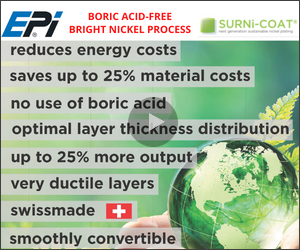Fish Eye Clear Coat
We’re having a problem with our clear coat. Our base coat paint turns out okay but when we started to clear coat, there came the fish eyes. I was taught that if silicone has been used in or around where you were painting this would happen. How can we correct this problem?
Q. We’re having a problem with our clear coat. Our base coat paint turns out okay but when we started to clear coat, there came the fish eyes. I was taught that if silicone has been used in or around where you were painting this would happen. How can we correct this problem? J. B.
A. Since your parts had no defects in the base coat/primer, they were probably contaminated after priming and before clearcoating. You must determine the source of the contamination. Did you do something different during the problem period? Were the parts clearcoated immediately after priming or were they stored? Contaminants could be falling on the parts after priming or during the clearcoating process. The compressed air feeding your clearcoat spray guns could be contaminated by pump oil or silicone seals. Silicone contamination could be introduced into plant air from personal care products like hand cream and anti-perspirants. They don’t even have to be present in the immediate vicinity of the paint application area. It has been demonstrated that airborne contaminants can travel long distances in plant air.
Related Content
-
Robots, AI and Superb BMW Surfaces
There isn’t an automotive paint shop in the world that doesn’t have post-paint inspection and defect processing. But BMW is doing this with levels of technology at a plant in Germany that exceed all other paint shops in the world.
-
Masking Solutions Provider CFS Dramatically Expands Capabilities and Capacity
Custom Fabrication & Supplies (CFS) completed a new plant expansion packing 10 times the capacity into twice the space. It dramatically enhances the supplier’s custom capabilities to provide extremely precise and cost-effective masking solutions.
-
Shedding Light on Surface Inspection
State-of-the-art reflector-based lighting system improves luminosity and ergonomics for surface inspection tasks while reducing energy usage.











